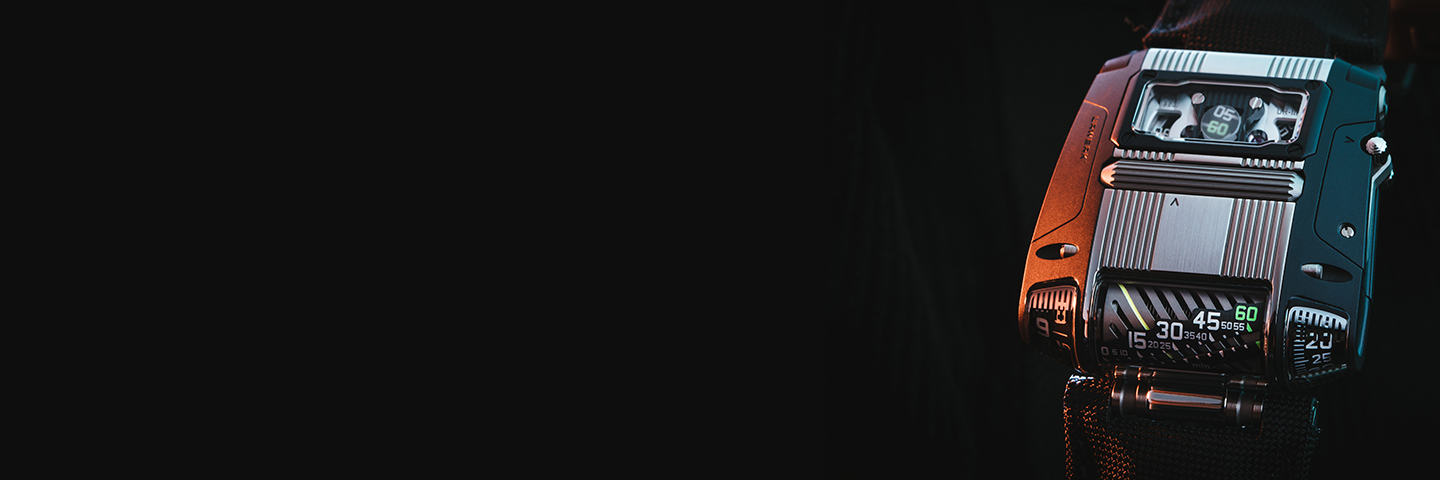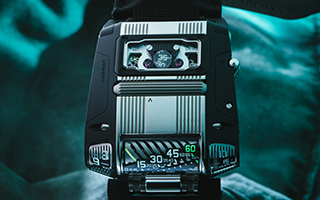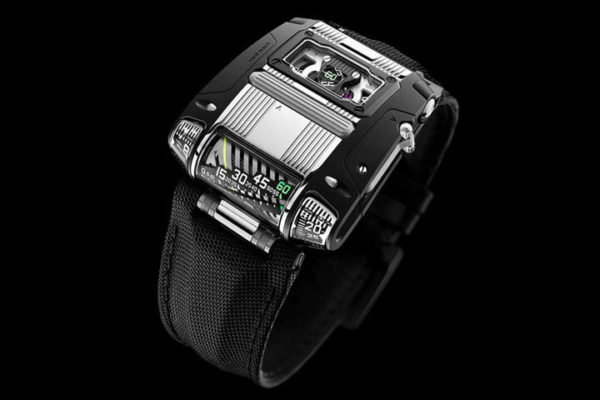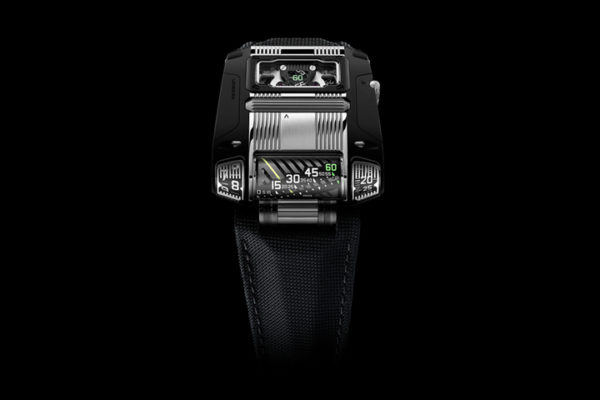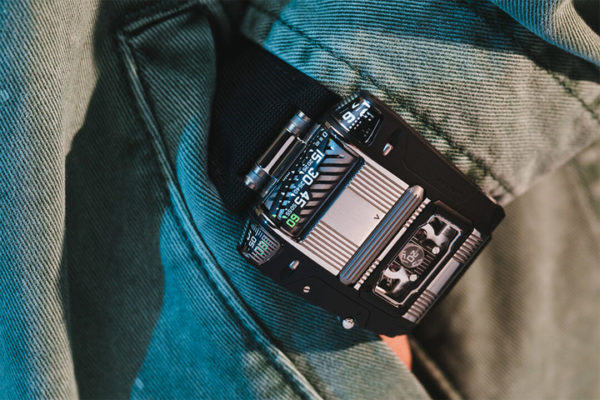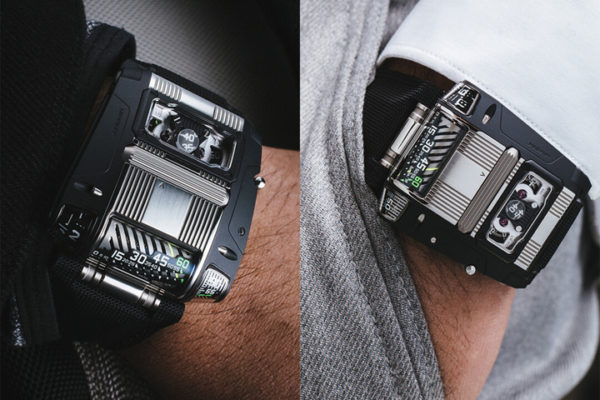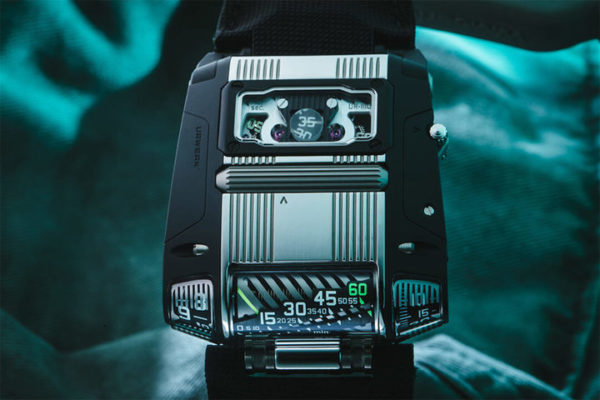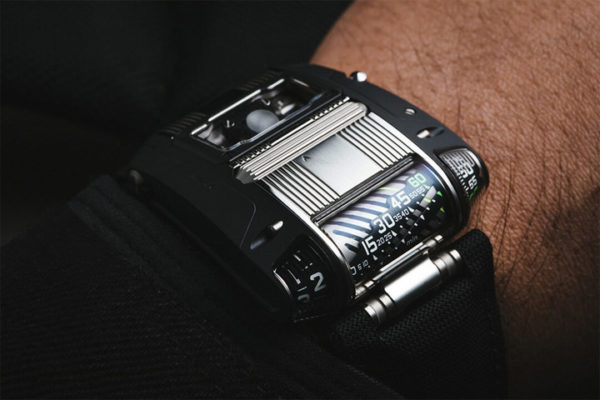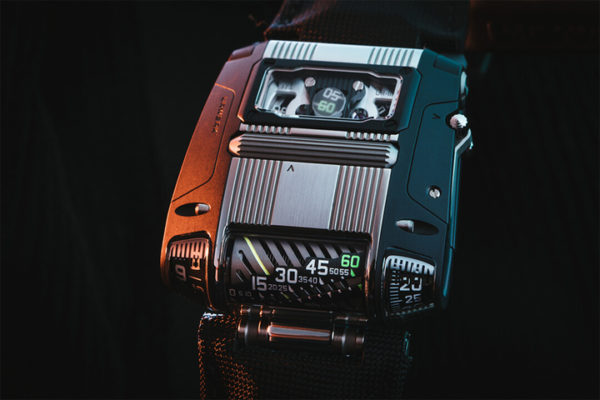Geneva – February 26, 2020
Independent Swiss watchmaker URWERK has always championed innovation. And its latest model, the UR-111C – now in a striking Two-Tone (TT) black PVD and brushed steel, teardrop profile case – is no exception. Certainly, as part of the “Special Projects” line – a deviation from the wandering hour indications for which URWERK has become well-known – it’s one of the most conceptually adventurous watches on the market.
The UR-111C TT comes with three key advances for watchmaking. The first is a retrograde linear minute display in an end-mounted driver’s watch style. This is a spinoff of the mechanism invented for the UR-CC1. With a twist. Here the numerals are set in a 30° diagonal slant for a better readability. This means that the rotating cylinder onto which the minute indicator is painted must rotate 300 degrees about its axis, during which a coiled spring is wound. At the 60th minute, the spring is released, making the indicator jump a further 60 degrees and back to the start position. But it also makes the hour indicator to its left jump too. The result is a pleasing optical illusion of the cylinder rotating endlessly and seamlessly.
The second innovation is the seconds display. Openwork Arabic numerals are set onto two wheels, each graduated in ten second increments. Each wheel is made using a cutting edge process of lithography, electroplating and moulding devised precisely for the creation of very light and specific structures. Indeed, each wheel, complete with its six numerals, weighs just 0.025g – and that’s just as well, given the delicate dance that the two will now take part in. Interlocking like the teeth on cogs, they show a smooth progression of passing seconds. But how is the wearer to see such small-scale elements? They move – at a distance of just one tenth of a millimetre – under what looks to be a kind of circular lens, but which is a cluster of optical fibres.
The third and, in many ways, most stimulating new concept that the UR-111C introduces is its fresh take on the crown, for winding and setting. Doing away with the conventional, side-mounted winder, URWERK’s new piece introduces a roller system, positioned right across the middle of the case top. Rolling will further charge the watch’s self-winding movement. When small lever to the right side of the case is released, the same roller can be used to set the time, with stop-seconds functionality. Of course, arranging all these micro-mechanics to create the end form of the UR-111C watch has been no easy task. The transmission had to be reimagined to allow a horizontal movement to provide a vertical time read-out within the crystal glass-covered truncated cones to both sides of the linear display. Connecting a roller crown to the winding stem likewise took feats of engineering, minuscule in scale but no less striking in effect.
But that precisely follows the design ethos of URWERK’s co-founders Felix Baumgartner and Martin Frei. More than just telling the time in sophisticated fashion, the UR-111C TT embodies both a visual and, especially unusually in watchmaking, a tactile treat for its owner. They’re ones which will sustain interest and intrigue alike through lifelong wear.


